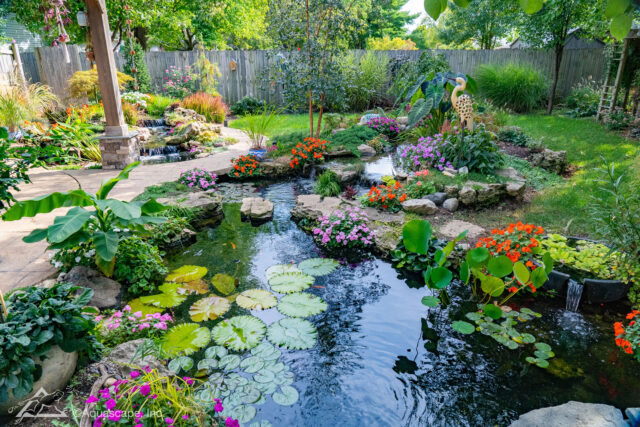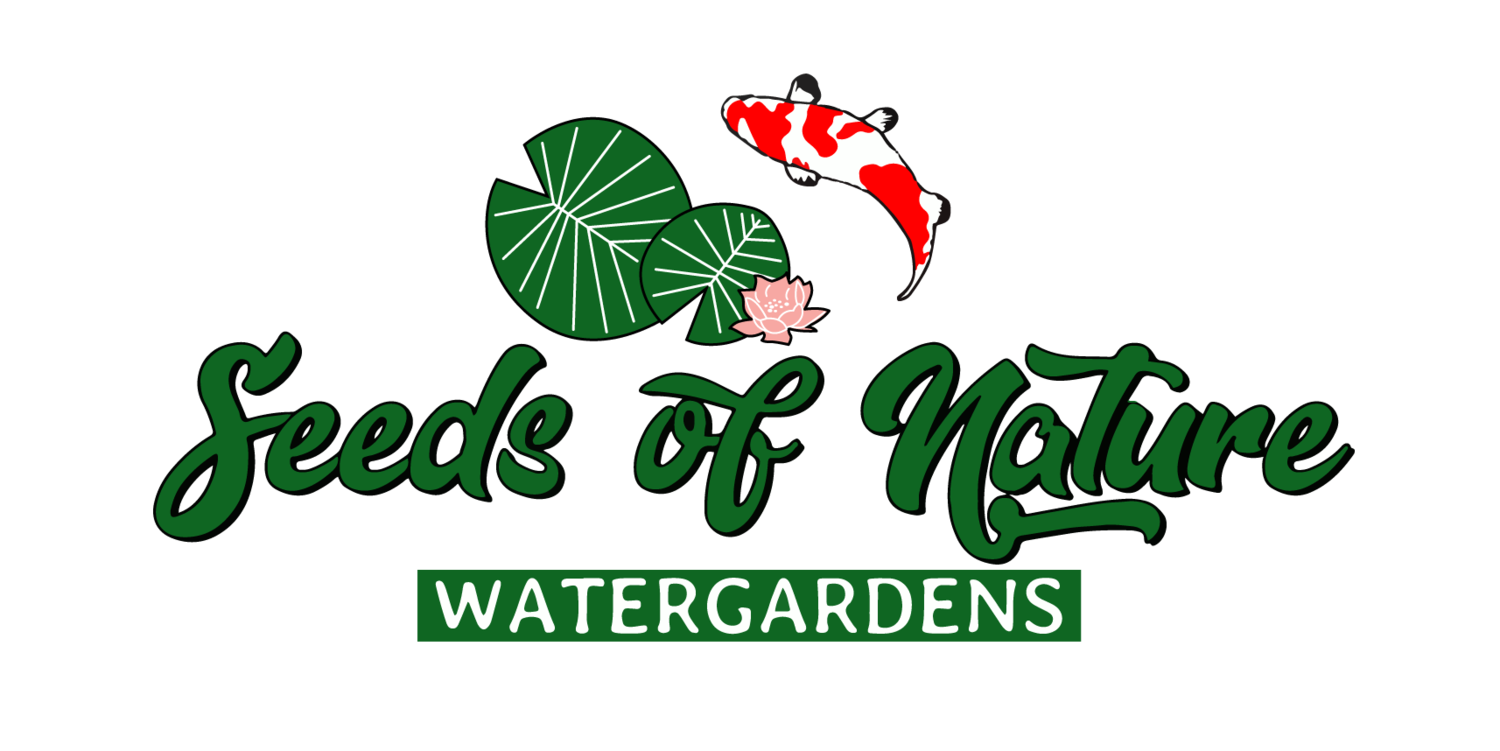
You’ve likely searched and read a lot about how to build a pond. I’m not going to go over the basics, but I will give you some advanced tips and tricks from a master certified aquascape contractor to help you mitigate any future headaches.
This will be geared towards those who want to build a natural ecosystem pond the aquascape way. If you are looking to build a traditional koi without plants or rocks then this article will not be for you.
How to build a pond – design
Do not put your pond in the lowest area in your yard. All of the runoff will lead into your pond causing water quality issues. You will constantly battle mulch, dirt, and excess water dumping into your pond. Consider building the pond as close to the outdoor living area as possible for maximum enjoyment. Most people want to design their pond in the back corner of their yard. You will not get the most of your pond this way. Bring it close to your seatin area.
Consider your soil drainage and the depth of your pond. If you are going deeper than 30″ you will more than likely develop drainage issues under the pond, and will have to prepare to create an underdrain to accomodate the excess water. If you do not, you will experience hydrostatic pressure on the liner. This can collapse the rock work inside the pond and cause problems later.
Also if going deeper than 30″ you should consider some kind of jet circulation. This is necessary in order to keep the lower stratification of water and its sediment moving towards your mechanical filtration.
This brings me to my next point about circulation.
Circulation
One of the most important components of your pond design and construction should be circulation. This includes the pump and plumbing but is not limited to these components. If you are building a pond larger than 14′ you should consider additional circulation methods. The point of circulation is to help remove sediments and debris from the water column and service to be picked up by the mechanical filtration. You can experience dead spots in the pond where debris will accumulate without this component.
Filtration
Arguably the most important component is the type of filtration. I always go double the manufacturers recommendation. If a filter capacity is 6000 gallons, then I will not install that filter on a pond that holds more than 3000 gallons. If you cheap out on this factor you will regret it with additional maintenance and headaches.
Bacteria and fish need oxygen to survive. Make sure your waterfall is sufficient to aerate the pond. Additional aeration units help to break the surface tension and increase the gas exchange on the top of the water. Consider adding in aeration at dead spots to increase circulation. More bang for your buck. You can also add an aeration unit right in front of your skimmer to increase disolved oxygen before the water is sent to your filtration unit.
Excavation
Use more underlayment than you think you need. One layer might be fine, but it is cheap insurance to guarantee there will be no punctures from hidden sticks or stones underneath the liner.
Accomodate the size of rock for your shelves. When building your shelves with rock, you can set the rock on the dirt shelf and the rock from the previous shelf. This will help increase the water volume without taking up too much space from the rock.
Rockwork
When setting rocks inside your pond ensure the rocks are sitting snug. The rule of thumb is three points of contact to ensure stability. Collapsing rock work can be catastrophic to your pond.
Plumbing
If you are in a freeze prone area ensure your plumbing runs consistently uphill from your skimmer to your biofalls. During a freeze if your pumps turn off or if you winterize your pond water can get stuck in a roller coaster bend. This water will freeze and can burst your pipe.
Edgework
When hiding the liner edges behind rockwork, make sure your folds rest vertically against the rocks before you bury them. Folds that lay horizontally can leak a hidden stream of water reducing your pond level. This will be a pain to find later since you will have to pull up the whole edge of the pond to find them.
If you used underlayment underneath larger boulders to help protect the liner then make sure the underlayment does not go over the liner into the soil. Underlayment can wick water vertically and drain your pond.
I hope these tips from the field help you on your pond jouney. You can find tips here to building a natural style waterfall
If you need help designing your pond you can contact us here and we will be glad to help.
You can watch us build a pond here to help you further along your build.
